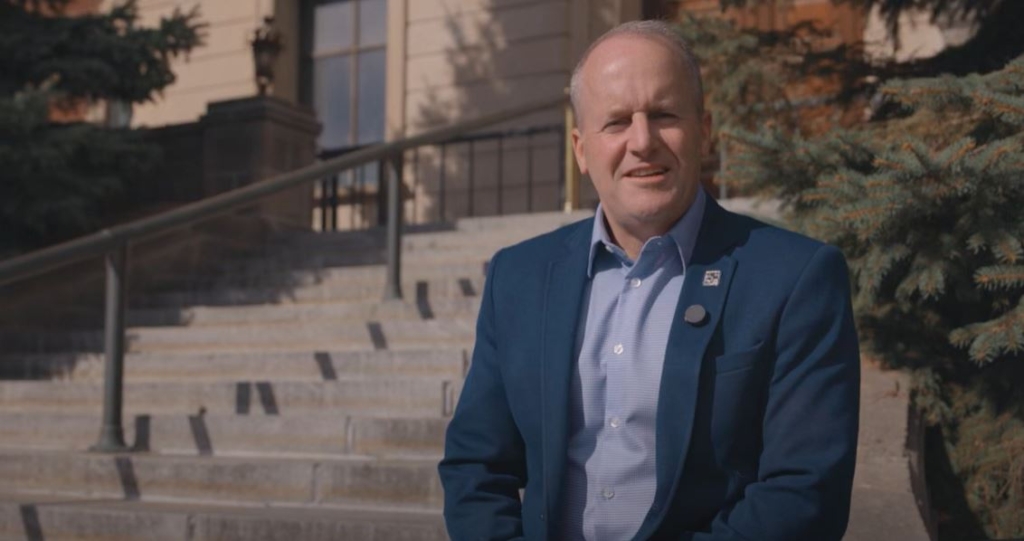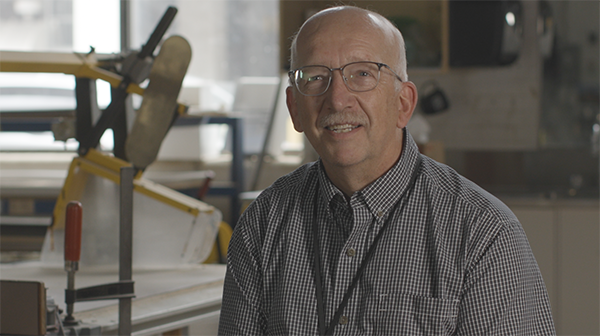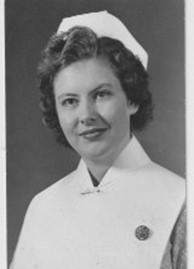November 27, 2024, marks the 100th anniversary of the grand opening of the Civic Campus.
For a century, the Civic has been at the heart of Ottawa, touching countless lives and setting the stage for groundbreaking advancements in Canadian healthcare.
As we look ahead to reshaping healthcare for the next century, we invite you to check out these 100 extraordinary moments from our past — moments that define the spirit and strength of our hospital and our community.
Celebrating 100 moments
 2024
2024100/100 – The Future of Healthcare
In this 100th and final moment of our series, President and CEO of The Ottawa Hospital, Cameron Love, delivers a personal message on why the Civic has meant so much to his family and how the incredible legacy of the past 100 years has led us to this moment in time – and will usher us forward into the next century of healthcare.
 2024
202499/100 – Special message from Mayor Mark Sutcliffe
Mayor Mark Sutcliffe, a proud Ottawa resident and longtime community advocate, knows firsthand the incredible impact the Civic Campus has had on our city over the last 100 years.
But did you know it was also an Ottawa mayor, Harold Fisher, who fought hard to make the Civic Hospital a reality a century ago, despite significant pushback?
We are grateful for Fisher’s foresight all those years ago and thankful that today, Mayor Sutcliffe is both a supporter and advocate of our hospital.
In this personal video — which marks moment 99 of our 100 Moments series — he shares his thoughts on The Civic’s remarkable legacy and The Ottawa Hospital’s bright future in our community.
 2000
200098/100 – The Civic’s longest-serving caretaker
If you’re looking for the person who knows the Civic Campus best, it might just be Fred Kendall. You could say he knows the building right down to its bones.
Fred has worked on our facilities team for nearly 25 years and is currently The Ottawa Hospital’s Capital Projects Manager.
Fred knows all the nooks and crannies of the Civic Campus — and despite the challenges an old building poses to a person who works in facilities management, Fred still has a lot of love in his heart for this old girl.
Take a few minutes to meet Fred. One of the Civic Hospital’s longest-serving caretakers.
 1960
196097/100 – From Black Shoes to Red Roses

Ruth Thomson Over the years, more than 4,000 nursing graduates had made the symbolic walk down the front stairs of the Civic, red rose in hand after graduating from The Ottawa Civic Hospital School of Nursing. Among them was Ruth Thomson (née Affleck) who knew from a very early age that she was destined to become a nurse.
“As a little girl, all my dolls had bandages, incision lines, and marks of trauma, all inflicted by this would-be nurse,” Ruth wrote in her book entitled From Black Shoes to Red Roses.
Ruth enrolled in 1958, paying $100 tuition over two years, which included uniforms, room, and board. She received her red rose and white shoes on June 1, 1960, and says, if she had the chance, would choose nursing all over again.
“It was a decision I never regretted and a choice I would repeat in spite of the many professions and opportunities offered to women at this time.”
Ruth adds that the Civic has served our area well over the last century but is excited about the Campaign to Create Tomorrow and the creation of a new world-class healthcare facility.
 2019
201996/100 – Community Moment from Dale Hayes
“My best memory of the Ottawa Civic was November 22, 2019.
My older brother, Glenn, who was 60 at the time, had just had a heart attack in Kemptville. He was rushed to the Civic by ambulance from Kemptville General.
When we got word, our family quickly gathered at the hospital — full of stress, anxiety, and fear. The staff were incredible with us all, but especially with my sister-in-law, Donna, and, most importantly, my brother. They saved his life.
The staff, whatever role, but especially the doctor and nurses, were amazing. Caring. Thoughtful. Considerate. Sympathetic. Funny. Patient. Knowledgeable. They explained what transpired, what to expect, and what was next.
God bless them all and thank you for all you do daily, but selfishly, thanks for saving my big brother on November 22, 2019.”

Dale and Glenn with their mom  1956
195695/100 – Shelagh Rogers is born at The Civic Hospital
Distinguished broadcaster, Shelagh Rogers, not only grew up in Ottawa, but was born right here at the Civic Campus in 1956. She went on to have an illustrious 43-year career with CBC Radio and became a beloved figure in Canadian media. She is particularly cherished for her ongoing commitment to Canadian storytelling and public service, her warm, engaging interview style, and her deep appreciation for Canadian culture.
However, Shelagh’s contributions extend far beyond broadcasting. She is highly regarded for her work to destigmatize mental illness and has raised awareness and funds for adult literacy initiatives.
She is a member of the Métis Nation of Greater Victoria, and in 2011, was inducted as an honorary witness for the Truth and Reconciliation Commission of Canada.
Her work has earned her numerous accolades, including induction into the Order of Canada, a Transforming Lives Award from The Centre for Addiction and Mental Health, and the inaugural Margaret Trudeau Award for Mental Health Advocacy.
Shelagh served as the Chancellor of the University of Victoria from 2015-2021, and most recently, in July 2024 she became the 16th Chancellor of Queen’s University, where she graduated in 1977.

